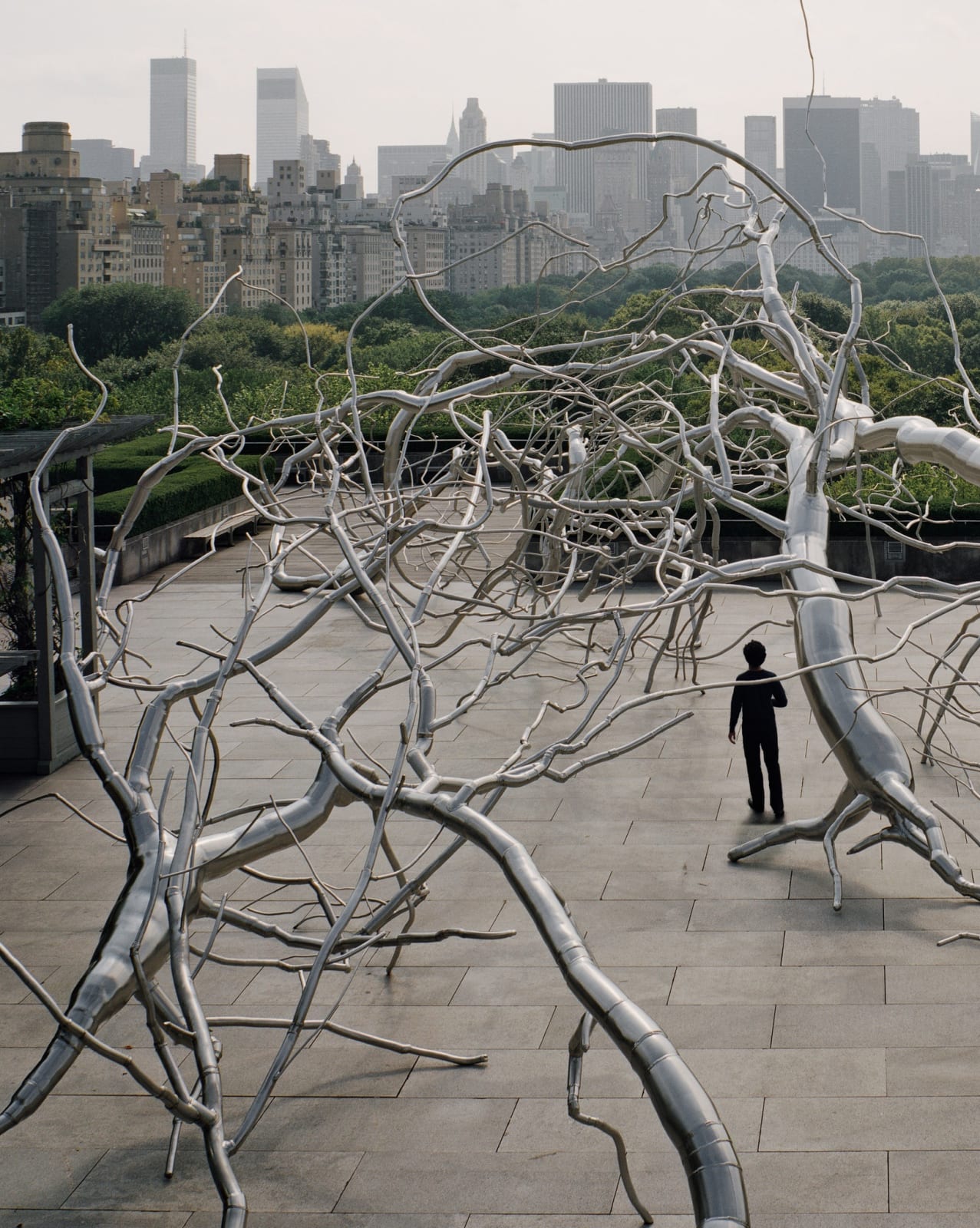
Roxy Paine
Maelstrom, 2009
stainless steel
264 x 1680 x 600 inches
670.6 x 4267.2 x 1524 cm
670.6 x 4267.2 x 1524 cm
Maelstrom was originally commissioned for exhibition at the Metropolitan Museum of Art Iris B. and Gerald Cantor Roof Garden, New York, NY in 2009. In overview, Maelstrom can be seen...
Maelstrom was originally commissioned for exhibition at the Metropolitan Museum of Art Iris B. and Gerald Cantor Roof Garden, New York, NY in 2009. In overview, Maelstrom can be seen as a mental storm characterized by a tangle of synaptic connections or a hyperactive mutated robotic vascular system. Maelstrom was imagined as a piece existing in five states simultaneously. First, as a forest downed by a tremendous turbulent force. Second, as that force itself. Third, as a neural “storm” such as might occur in the brain during an epileptic seizure. Fourth, as
a vascular system connecting into the buildings own vascular system, and fifth, the tree in the process of becoming abstract - broken down and reconstituted.
Roxy Paine’s interest in stainless steel derives from its institutionalized use in pharmaceutical, food, gas and oil pipeline industries. Paine’s Dendroids decompose and dissolve standard stainless steel pipe into a language of parts. To Paine, this distillation becomes a knowledge of the physics and dynamics of the steel, as well as, a disseminated language of tools. His Dendroids reprogram and/or rewrite industrial materials from the utilitarian to transcendent. Through his reprocessing of standard industrial materials, Paine transcribes stainless steel into a a psychoactive or hallucinatory experience. The banal and the hallucinatory are often a conceptually intertwined and indecipherable component of Paine’s work.
a vascular system connecting into the buildings own vascular system, and fifth, the tree in the process of becoming abstract - broken down and reconstituted.
Roxy Paine’s interest in stainless steel derives from its institutionalized use in pharmaceutical, food, gas and oil pipeline industries. Paine’s Dendroids decompose and dissolve standard stainless steel pipe into a language of parts. To Paine, this distillation becomes a knowledge of the physics and dynamics of the steel, as well as, a disseminated language of tools. His Dendroids reprogram and/or rewrite industrial materials from the utilitarian to transcendent. Through his reprocessing of standard industrial materials, Paine transcribes stainless steel into a a psychoactive or hallucinatory experience. The banal and the hallucinatory are often a conceptually intertwined and indecipherable component of Paine’s work.
